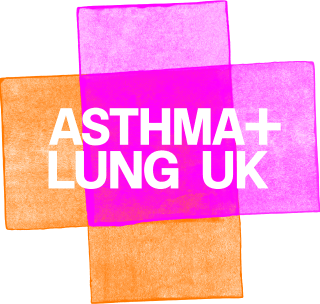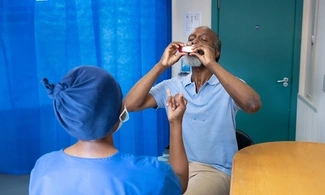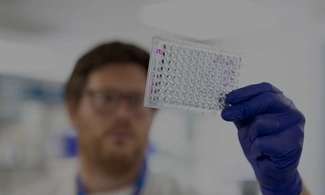Your child's reliever inhaler
It’s really important that your child has their reliever inhaler with them at school or nursery in case their asthma symptoms flare up.
Reliever inhalers are often blue. But some children may have a combination inhaler that they can also use as a reliever inhaler. For example, if they’re on a MART (Maintenance and Reliever Therapy) or AIR (anti-inflammatory reliever) treatment plan.
Find out more about how asthma is treated in children.
Emergency inhalers at school
Schools and nurseries are allowed to keep blue emergency reliever inhalers for students to use if their own is not available. In emergencies, it’s safe for your child to use an emergency blue inhaler even if they’re on a MART or AIR plan and usually use a different reliever inhaler.
Children with suspected asthma can also use an emergency inhaler if they have been prescribed a reliever inhaler by their GP surgery.
If you would like your child to be able to use these emergency inhalers, you have to give your consent to the school or nursery.
Not all schools and nurseries have emergency inhalers. If your child’s school or nursery does not have emergency reliever inhalers, tell them that emergency inhalers can help prevent unnecessary hospital trips and save lives.
You may be concerned about cost and waste, but the school’s emergency inhaler should rarely need to be used if all children have access to their own inhaler and spacer.
Talking to your child's school or nursery
The best way to make sure your child with asthma is being cared for properly by their school or nursery is to talk to your child’s teacher or nursery keyworker every term.
Tell teachers and staff about your child’s asthma or suspected asthma. It’s important to make sure your child’s school or nursery knows about their asthma so they can help your child stay well. Find out who is in charge of asthma at your child’s school or nursery. You could invite them to the meeting too.
Give your child’s school or nursery an asthma action plan. This keeps everything staff need about your child’s asthma or suspected asthma in one place, including information about their triggers, symptoms and medicines. It also explains what to do if your child has an asthma attack.
You can also tell your school or nursery about our poster for schools on what to do if a child has an asthma attack.
If your child has been wheezy lately or has a cough or a cold, it’s a good idea to tell your nursery or school this when you’re dropping them off in the morning. This is so that staff know to keep an eye on them.
Do you feel like you’re not getting the support you need from your child’s school or nursery?
If you want to talk to somebody, you can chat with expert asthma nurses on our helpline (from 9am to 1pm and 2pm to 5pm, Monday to Friday, excluding bank holidays).
You can also join our Health Unlocked forum. This is a safe and friendly space where you can share your experiences with other parents and carers who are going through the same things as you.
What questions should I ask?
These sample questions might help you talk to your child’s school or nursery. Your child will get the best care if you all work together.
What will you do if my child gets asthma symptoms?
Tell your child’s school or nursery the best way to contact you, so they can keep you up to date.
How should I tell you about any changes to my child’s asthma?
It’s a good idea to tell your child’s school or nursery if there’s anything new they should know about that could affect your child’s asthma. For example, if your child has changed asthma medicines, has a cold, or has been using their reliever inhaler (often blue) more.
Have staff at this school or nursery had any asthma training?
There’s a lot of free and low-cost training available to teachers and school staff. For example, they can complete Education for Health’s free training course about supporting children with asthma.
What policies do the school or nursery have in place?
Find out what medical policies your child’s school or nursery has in place to keep your child safe. It’s also a good idea to ask about the school or nursery’s attendance policy because your child might have to miss school or nursery if they have GP appointments or feel unwell because of their asthma.
Where will my child’s inhaler and spacer be kept?
Your child needs to be able to use their reliever inhaler (often blue) as soon as they get asthma symptoms. This means that it should always be close to them.
Make sure that your child’s inhaler is not kept somewhere hard to reach in an emergency, like a locked cupboard. It’s a good idea to check where the school or nursery will keep your child’s inhaler during PE lessons and other activities too.
If your child is older and can take their inhaler alone, they could keep it in their school bag or pocket.
Does the school have an emergency inhaler?
Your child needs to be able to use their reliever inhaler (often blue) as soon as they get asthma symptoms. They should always keep it with them. However, schools and nurseries are allowed to keep blue emergency reliever inhalers for students to use if their own is not available.
Remember that it’s safe for your child to use an emergency blue inhaler even if they’re on a MART or AIR plan and usually use a different reliever inhaler.
If your school does have an emergency inhaler, talk to them about their policy on using it. Make sure you give your consent to the school or nursery if you’d like your child to be able to use these emergency inhalers.
Going to secondary school
When your child goes to secondary school, it’s a good idea for them to start managing their asthma themselves. When this happens, encourage your child to:
- take their preventer medicines every day, as prescribed
- check that their reliever inhaler (often blue) is in their bag before leaving for school every day. They should always keep it with them, especially during PE or on school trips. If your child uses a spacer with their inhaler, they should also always keep it with their inhaler.
- know when they need to use their reliever inhaler and what to do if they have an asthma attack
- find out where their school keeps their blue emergency reliever inhalers, in case they forget their own
- use their asthma action plan to help them manage their asthma. This keeps everything they need to know about their asthma in one place, in case they forget.
We have more advice to help your child transition to secondary school, including information about puberty, studying and exams. Find out more about asthma, teenagers and young people.
Asthma attacks at school or nursery
Give school or nursery staff an asthma action plan. This lists your child’s asthma symptoms and has clear instructions about what to do if they have an asthma attack.
What to do if your child has an asthma attack
What to do if your child has an asthma attack will depend on the type of inhaler they use.
We have information on what to do if your child has an asthma attack if they use a blue reliever inhaler or a combination inhaler that can also be used as a reliever, like a MART inhaler.
Find out more about the signs of an asthma attack and how to help your child recover from one.
Back-to-school asthma attacks
Every September, there’s a rise in the number of children in the UK who go to hospital because of asthma attacks. There are lots of reasons for this.
Some children get out of routine during the summer holidays and do not take their preventer medicines as prescribed. This can lead to their asthma being poorly controlled when they go back to school.
It’s important to make sure your child is sticking to their medicine routine a few months before they go back to school. This is to give the medicine time to build up and protect them from an asthma attack when they start going to school again.
Your child could also be exposed to asthma triggers when they go back to school or nursery, for example:
- air pollution
- colds and flu
- dust mites
- strong emotions, like fear, stress and excitement
- physical activity
- mould
- pollen.
Manage your child's asthma well
Managing your child’s asthma well can help to control their symptoms and avoid asthma attacks.
Find out how to manage your child’s asthma.
Be prepared for an emergency
- Make sure that the school have a copy for your child’s up to date asthma action plan.
- Make sure your child is able to use their reliever inhaler (often blue) as soon as they get asthma symptoms. They should keep it with them at all times so make sure your child takes their reliever inhaler to school or nursery every day. If they use a spacer, make sure they take this too.
- Ask your GP for an extra reliever inhaler and spacer and give these to your child's school or nursery. They might ask you to make sure any medicines are in the original box with the prescription label still on the outside.
- The school or nursery should keep your child’s medicines somewhere easy to get to, in case your child needs to use them quickly. Do not store them in a locked cupboard.
- If your child uses their MART inhaler as their reliever, make sure the school understand this. It’s important that anyone caring for your child understands how to use it in an asthma attack.
- If your school or nursery has blue emergency reliever inhalers, make sure that you’ve given your consent to the school or nursery if you’d like your child to be able to use their emergency inhaler.
How can teachers help?
If you’re a teacher, you could complete Education for Health’s free training course about supporting children with asthma. The course only takes around 45 minutes and will help you give your students with asthma the right support. You could encourage other members of staff to do this too.
There are also simple things you can do in the classroom to help keep children with asthma safe.
Try to
- Learn what to do if a child has an asthma attack.
- Make sure you have an asthma action plan or an Individual Healthcare Plan for each of your students with asthma. This keeps everything you need to know about their asthma in one place, including information about their symptoms, medicines and asthma triggers.
- Always watch children take their inhaler to make sure they’re using it properly. Younger children might need help taking their inhaler. You can use our short inhaler videos to learn the correct inhaler technique.
- Tell parents and carers when a child uses their inhaler or has asthma symptoms. This will help them manage their child’s asthma at home.
- Speak to your school or nursery about getting an emergency inhaler. Emergency inhalers can help to prevent unnecessary hospital trips and save lives.
- Understand asthma triggers, so that you can help your students avoid them.
Do not
- Leave children alone if they have asthma symptoms. Stay with them until they feel better.
- Let children get their own inhalers if they have asthma symptoms. Get their inhaler for them.
- Keep spare inhalers in locked cupboards. They should be easy to reach in an emergency.








